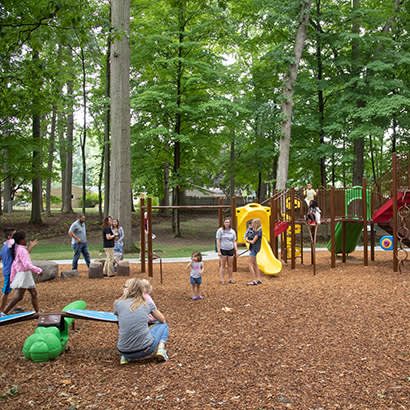
For an enhanced digital experience, read this story in the ezine.
Through the tireless efforts of hundreds of thousands of full-time, part-time and seasonal workers — and supported by countless volunteers and advocates — local park and recreation agencies have a positive impact on the lives of millions of people. Park and recreation facilities, amenities and programming are diverse; they range from no- or low-cost fitness opportunities and access to nutritious meals at out-of-school programs for youth, to providing our cities, towns and counties with cleaner air and water thanks to preserved open spaces.
Parks and recreation also is an engine of economic activity locally, statewide and across the nation. The latest edition of the NRPA Economic Impact of Local Parks report, finds local park and recreation agencies’ operations and capital spending generated nearly $218 billion in economic activity and supported 1.3 million jobs across the United States in 2019. This is the fourth of a series of analyses conducted by Dr. Terry Clower of the Center for Regional Analysis at George Mason University.
According to the U.S. Census Bureau, local park and recreation agencies employed more than 385,000 full-time and part-time employees in 2019. That translates to almost $49 billion of operations spending by the nation’s local park and recreation agencies. This spending — combined with capital expenditures — ripples through the national, regional and local economies as park and recreation employees spend their paychecks, park and recreation agency vendors hire workers, and both agencies and their vendors purchase products and services to serve their clients.
The new report also features economic impact estimates for all 50 states and the District of Columbia. For example, California’s local park and recreation agencies’ operations and capital spending generated more than $23.6 billion of economic activity and supported more than 126,700 jobs.
These estimates are even more potent because they are conservative and do not reflect other ways that parks and recreation promotes economic activity and prosperity. Beyond the impact of local park and recreation agency spending, other critical economic impact contributions from public parks include:
- Conservation and resiliency
- Health and wellness
- Property values
- Visitor spending
Park and recreation agency spending generates three significant effects:
- Direct effects reflect the spending by local park and recreation agencies and include wages and benefits to agency employees and spending on equipment, utilities, goods and services.
- Indirect effects capture the spending associated with local park and recreation agencies’ vendors.
- Induced effects track the impact of consumer spending (from wages) by park and recreation agency employees and employees working for agencies’ vendors.
Even more exciting is that early indications suggest that park and recreation contributions to the economy held stout in the face of the coronavirus (COVID-19) pandemic. Preliminary analysis finds local park and recreation agency operations and capital expenditures generated $225 billion in economic activity during 2020. While this estimate is subject to revision after more data come in, the implications are clear. Not only are parks leading the way in terms of health and wellness, equity, and conservation, but also they drive significant economic activity. By committing to greater and more sustainable park and recreation funding models, localities can support a virtuous cycle of a robust economic environment that can benefit every community member.
The past few years have highlighted the need for park and recreation professionals and their advocates to educate policymakers, key stakeholders and the general public on the broad impact of their work. When combined with the ability to deliver healthier and happier communities, parks and recreation’s powerful economic impact highlights how your agency’s offerings are critical infrastructure that transforms our cities, towns and counties into vibrant and prosperous communities for all.
Kevin Roth is NRPA’s Vice President of Research, Evaluation and Technology.

